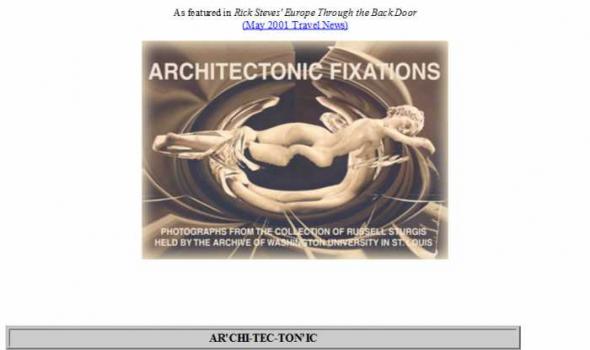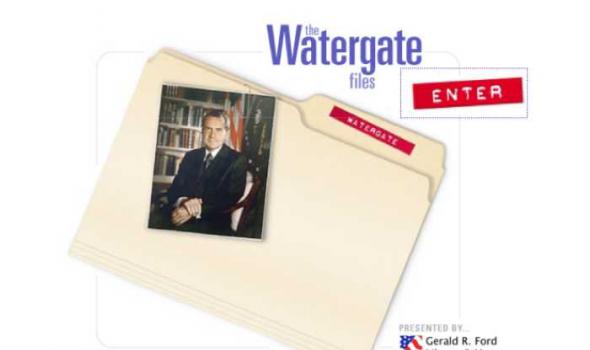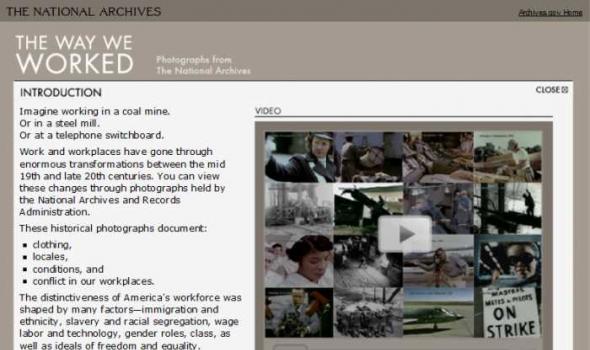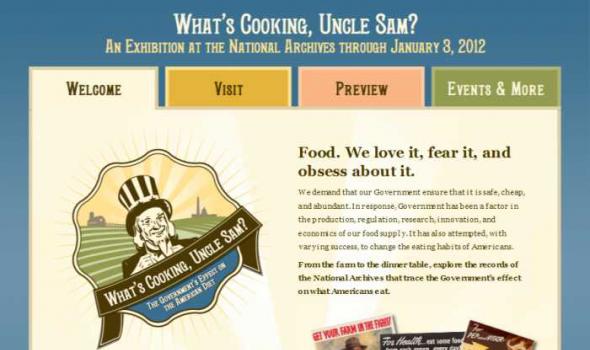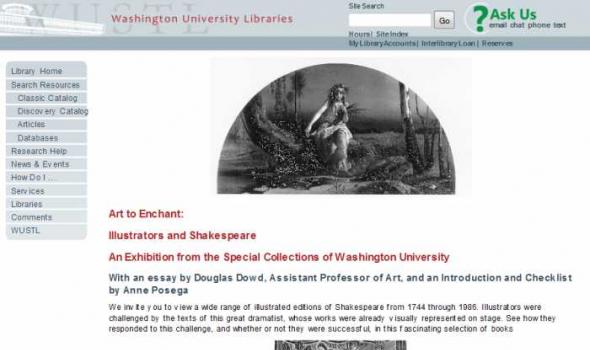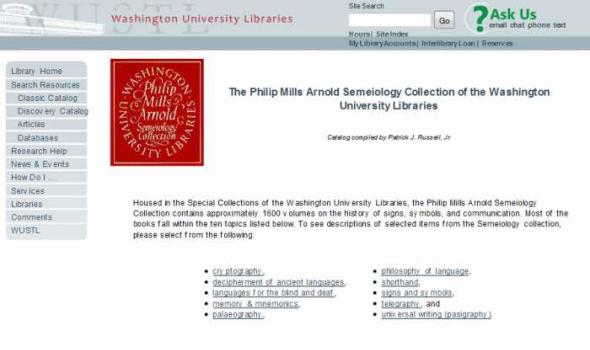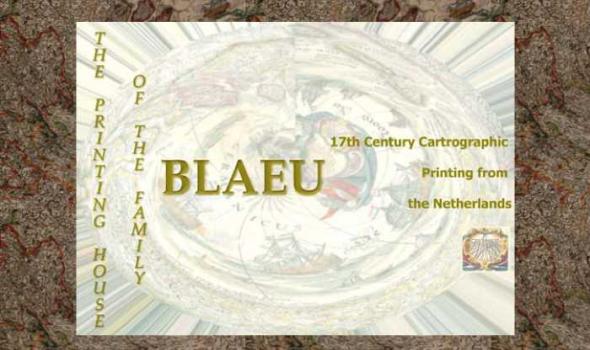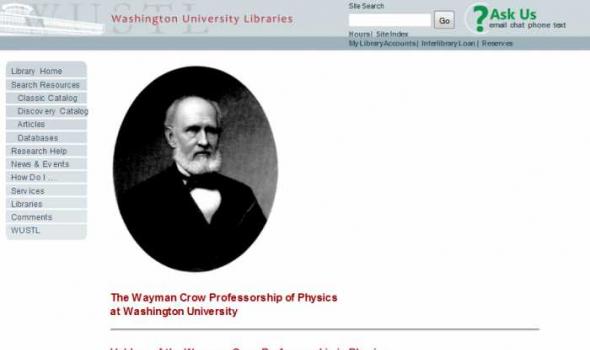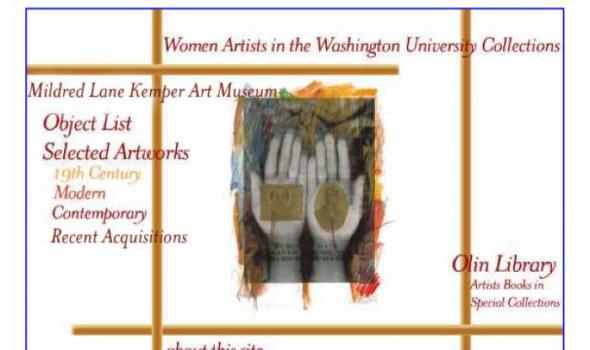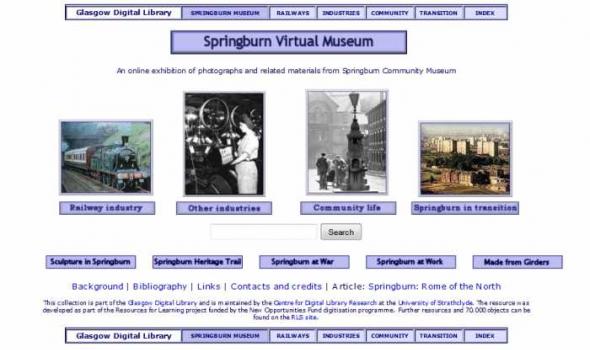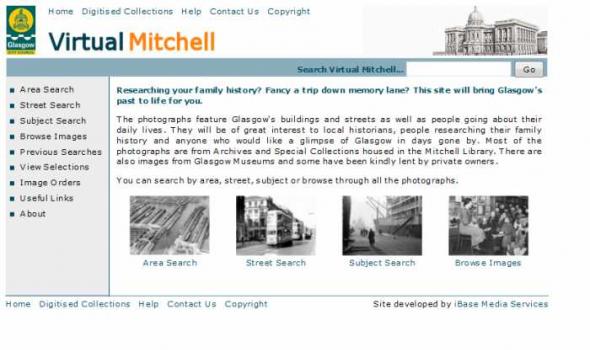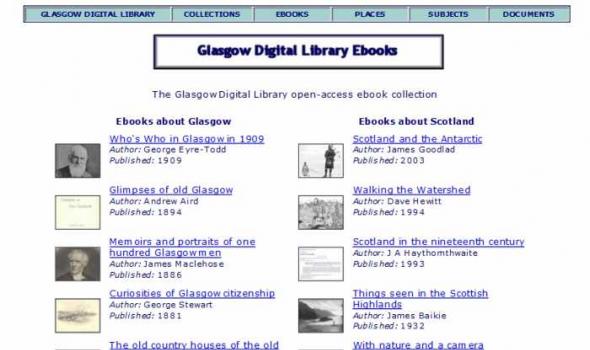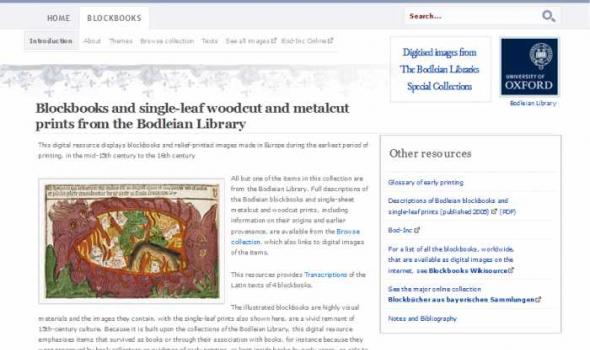English
The National Archives and Records Administration Clifford K. Berryman: Political Cartoonist Extraordinaire In 1886 at the age of 17, Clifford K. Berryman moved from Kentucky to Washington, DC, to work at the U.S. Patent Office, where he used his self-taught talents to draw patent illustrations. He left the Patent Office in 1891 to become a cartoonist’s understudy for the Washington Post. Within five years, Berryman was chief cartoonist, a position he held until 1907 when he became the front-page cartoonist at the Washington Evening Star. Berryman drew political cartoons for the Star until his death in 1949 at the age of 80. Washington political circles embraced Berryman’s cartooning.
About This Exhibit Tokens and Treasures Gifts to Twelve Presidents The exhibition "Tokens and Treasures, Gifts to Twelve Presidents" was displayed in the Circular Gallery of the National Archives, March 22, 1996 through February 2, 1997. This exhibit showcases over 200 gifts sent to Presidents Hoover through Clinton.
This web site features approximately 320 digitally rendered images from a collection of over 15,000 photographic prints held by the University Archives of Washington University in St. Louis. This web site consists of five sections, namely: that will be on exhibit in the Department of Special Collections in Olin Library at Washington University in St. Louis from 25 May to 31 July 2001. Last modified: August 3, 2001
Treasures of Congress An exhibit in the National Archives Rotunda, Washington, DC January 21, 2000—February 19, 2001 Few institutions have been as central to the course of American history as the U.S. Congress. Most of the great issues in our national life have been played out there, and many of our most memorable political figures have served in the House of Representatives or the Senate. Congress's pivotal position was built into the American system in 1787.
Chrysler Cars Information Although both cars have been in the Truman Library collection for years, they had lost much of their original historical integrity, having passed through a series of other owners once the Trumans moved into the White House in 1945. For the past two years, a team of restorers has worked meticulously documenting the existing condition of the cars and establishing a restoration plan. Detailed production records from the Chrysler archives were consulted to determine paint colors and options which were originally included on the cars.
When Judge John Sirica gaveled the trial of the Watergate seven to order on January 8, 1973, federal investigators had already discovered a covert slush fund used to underwrite nefarious activities against Democrats. The money and the men on trial could be linked to the Committee to Re-elect the President (CRP) at whose head sat the former Attorney General of the United States, and President Nixon’s former law partner, John Mitchell. At the trial, E. Howard Hunt, who had planned the break-in, and four of the burglars pleaded guilty. G. Gordon Liddy, who helped in the planning, and James McCord, the other burglar, refused to cooperate, were convicted of various charges, and sentenced to prison.
National Archives and Records Administraton The Way We Worked Imagine working in a coal mine. Or in a steel mill. Or at a telephone switchboard. Work and workplaces have gone through enormous transformations between the mid 19th and late 20th centuries. You can view these changes through photographs held by the National Archives and Records Administration. These historical photographs document: The distinctiveness of America's workforce was shaped by many factors—immigration and ethnicity, slavery and racial segregation, wage labor and technology, gender roles, class, as well as ideals of freedom and equality. Most importantly, these images honor those who built this country—the working men and women of America.
What’s Cooking Uncle Sam? An Exhibition at the National Archives through January 3, 2012 Food. We love it, fear it, and obsess about it. We demand that our Government ensure that it is safe, cheap, and abundant. In response, Government has been a factor in the production, regulation, research, innovation, and economics of our food supply. It has also attempted, with varying success, to change the eating habits of Americans. From the farm to the dinner table, explore the records of the National Archives that trace the Government’s effect on what Americans eat.
Elvis Presley met President Richard Nixon in the Oval Office on December 21, 1970. This is the behind-the-scenes story of how and why the meeting occured told through the original photographs, letters and memos created by Presley and the White House staff.
Introduction by Anne Posega With these words Hanmer voiced England's growing national pride in Shakespeare, a pride materially represented by the numerous editions which were produced in the 18th century. Different editors argued for their textual emendations in prefaces, footnotes, and advertisements, and the debate fueled layer after layer of criticism and responses. In a similar way, the illustrations in these editions were themselves transforming, starting with the first illustrated edition in 1709. Edited by Nicolas Rowe and printed for Jacob Tonson, The Works of Mr. William Shakespear, in Six Volumes was the first edition to be "Adorn'd with cuts". The illustrations in this edition were generally theatrical in nature, with many looking like illustrations of a production.
Celebrating Women The achievements of women have marked every aspect of Washington University history, in its excellence of teaching, in the depth of its research, and in the lives of so many students. We hope you will enjoy browsing the thematic topics of this online exhibit, which are listed on the right-hand menu. Each section contains multiple pages of information. The exhibit may also be searched by keyword, or you can select "Browse Items" or "Browse Collections" to view lists of materials used in this exhibition. The stories of these accomplishments could fill pages upon pages. This exhibit can only offer a beginning look into this history by highlighting some of these women and their accomplishments.
Overture At many universities, athletics was said to unite the student body, but at Washington before the First World War, dramatics came closest to filling that role ... With no more than occasional help from faculty members, usually in the English Department, and a few theater buffs in the city, students made Washington University the busiest center of theatrical activity in St. Louis --Ralph Morrow, Washington University in St. Louis: A History , p.242. In Curtain Time , the story of student performing arts at the University is told through programs, music scores, photographs, sound recordings, video, and artifacts from the University's historical record.
Depicting Devotion: Illuminated Books of Hours from the Middle Ages December 5, 2001 - February 16, 2002 Curated by Kevin Kalish, Department of English and Christina Linsenmeyer van Schalkwyk, Department of Music Rarely does the opportunity come to peruse, page by page, through a medieval book or manuscript. This exhibit attempts just that. By following the arrangement of this exhibition, the viewer sees the structure and format of a Book of Hours writ large. Books of Hours, one specimen in the history of Illuminated Manuscripts, exhibit a vivid interplay between image and text.
In keeping with its designer's intent, Washington University's Benjamin Brown Graham Memorial Chapel serves as a refuge to entertain both the intellectual and spiritual. The physical design of Graham is quite straightforward. The intellectual and spiritual impetus of the design of Graham is not. By sauntering through a forest of historical perspective, we will examine Graham's manner of conception by focusing on two elements: grotesques and glass.
Collection Description 35,000 Items (164.5 linear feet) Access: Some restrictions. Contact curator. James Ingram Merrill was born in New York City on March 3, 1926, and grew up in Manhattan and Southampton. He was the son of Charles Merrill, co-founder of the brokerage firm Merrill Lynch, and his second wife, Hellen Ingram. He began writing poems at as a child, and at age sixteen, while he was in prep school, his father had a book of them privately printed under the title Jim’s Book . Merrill’s studies at Amherst College were interrupted by service in the U.S. Army from 1944 to 1945. Another book, The Black Swan , was privately printed in 1946 while he was still in college. Following his graduation in 1947, he taught for a year at Bard College.
Site Search Hours | Site Index email chat phone text My Library Accounts | Interlibrary Loan | Reserves A Description of the Arnold Semeiology Collection Perhaps the most varied and individual collection in the Special Collections of the Washington University Libraries, the Philip Mills Arnold Semeiology Collection now numbers approximately 1600 volumes, extending in time from the Ars Oratoria of Jacopo Publicio (Augsburg, 1490) to Charles Kasiel Bliss's International Semantography (Sydney, 1948-49), and ranging in subject matter from cryptography to the sign language of the deaf.
The Printing House of the Family Blaeu: 17th Century Cartographic Printing from the Netherlands During the seventeenth century the people of the seventeen united provinces of the Netherlands experienced a period of tremendous economic prosperity. As a water-logged society with few land-based natural resources of their own, the Dutch developed into a highly efficient maritime culture that feverishly explored the globe to find goods that were in demand on the continental European market. Along with numerous advances in the fields of science, industry, business, and linguistics, the Dutch also became experts at book and cartographic printing.
Terra Incognita: An Online Exhibition This exhibit features early printed accounts of exploration and cultural encounters between what is known as the Old World or Europe and the New World or the Americas. The people on both sides of these encounters viewed the people they met through the screen of their culture and how they perceived the world, including their myths, legends, and religious beliefs. Both sides often had to reconfigure and rebuild their idea of the world with this new knowledge. The results yielded much knowledge and discovery but also misunderstanding, fear and violent attempts to control various groups.
About Wayman Crow The youngest in a family of twelve children, Wayman Crow was born in Hartford, Kentucky, on March 7, 1808. Crow first entered the dry goods business in 1820, when he began a five-year apprenticeship in a general dry goods store in Kentucky. By 1828, he was operating his own dry goods store, and he moved to St. Louis in 1835. In partnership with his cousin, Joshua Tevis of Philadelphia, he established the wholesale dry goods house of Crow & Tevis. In later years, the business would be known as Crow, McCreery & Company Crow, Hargadine & Company, and Hargadine-McKittrick Dry Goods Company. In 1840, Crow was elected to the Missouri state senate, on the Whig ticket. He was elected to a second term in the senate in 1850.
This website, dedicated to the work by women artists in the collections of Washington University, was developed in 2001-2002 with the support of a grant from the Sam Fox Arts Center at Washington University in Saint Louis. The project was developed in concert with a course, "L01-3631 Creative Women: Modern Artists and Writers," co-taught in the Spring of 2002 by Elizabeth C. Childs, Associate Professor of Art History and Archaeology, and Helen Power, Senior Lecturer in Women's Studies. Betha Whitlow, Curator of Visual Resources in the Department of Art History and Archaeology, supervised the design and implementation of the site in consultation with Professor Childs and Dr. Sabine Eckmann, Curator of the Mildred Lane Kemper Art Museum.
This collection is part of the Glasgow Digital Library and is maintained by the Centre for Digital Library Research at the University of Strathclyde . The resource was developed as part of the Resources for Learning project funded by the New Opportunities Fund digitisation programme. Further resources and 70,000 objects can be found on the RLS site .
Alan Dawson February 2007 The Scottish Mountaineering Club (SMC) was formed in March 1889, with the aim to: "encourage mountaineering in Scotland in winter as well as summer; to serve as a bond of union amongst all lovers of mountain climbing; to create facilities for exploring the less known parts of the country; to collect various kinds of information, especially as regards routes, distances, means of access, time occupied in ascents, character of rocks, extent of snow in winter, etc., and in general to promote everything that will conduce to the convenience of those who take a pleasure in mountains and mountain scenery." The printed journal Soon after its formation, the Club began publishing the Scottish Mountaineering Club Journal, following the successful model of the Alpine Journa
Voyage of the Scotia 1902-04 The material for Voyage of the Scotia 1902-04 was supplied by the Royal Scottish Geographical Society unless stated otherwise, and was edited and converted to web format at the Centre for Digital Library Research . This resource was developed as part of the Resources for Learning project funded by the New Opportunities Fund digitisation programme. Further resources and 70,000 objects can be found on the RLS site .
The Mitchell Library is one of the largest public reference libraries in Europe. To make its resources more accessible, a selection of photographs and other images of the city has been digitised. This project has been partly funded by the Scottish Office Challenge Fund. These images are just a small selection from those held in Archives and Special Collections in the Mitchell Library (on Level 2) and also from the city's museums. Private owners of images have also kindly lent them for copying. The selected material is of local and historical interest, featuring Glasgow's buildings and streets as well as showing Glasgow's people going about their daily lives.
The Red Clydeside period During the period between 1910 and 1932 the city of Glasgow was witness to an unparalleled wave of working class protest and political agitation which challenged the forces of capitalism and also, on occasion, directly challenged the state itself. The events and people who shaped this period forged an enduring legacy which still remains part of the political and social fabric of the city to the present day, and which is known quite simply as Red Clydeside. This turbulent period of industrial, social and political upheaval reinforced Glasgow's reputation as the centre of working class struggle in Britain in the early years of the twentieth century.
August 2003 James Maxton was one of the leading figures of the Independent Labour Party (ILP) in Glasgow and a key political figure during the Red Clydeside period. Like many of his colleagues in the ILP, Maxton was a pacifist and campaigned against Britain's involvement in the first world war and against the introduction of conscription. Maxton was imprisoned in 1916 for delivering pro-strike speeches at a demonstration to oppose the Munitions Act. Maxton was elected MP for Bridgeton in 1922 and devoted much of his political life to alleviating poverty within the city of Glasgow. Maxton attempted on several occasions to steer the Parliamentary Labour Party in the direction of a strictly socialist programme of policies.
These books have been digitised and converted to web format at the Centre for Digital Library Research . Research is continuing into ebook development and indexing, partly funded by the University of Strathclyde Research and Development Fund.
Last Updated: 19/03/2004 Disclaimer: This website is best viewed with a monitor resolution of at least 1024x768. eMail: victoriantimes@cdlr.strath.ac.uk Victorian Times is funded by the New Opportunities Fund (NOF) under their digitisation funding strand. � Centre for Digital Library Research, University of Strathclyde, 2003-2009
March 2002 The Aspect project was set up to create a digital archive of the ephemera - leaflets, flyers, postcards, newsletters - produced by candidates and political parties for the first Scottish parliamentary election in May 1999. The project is funded by the University of Strathclyde's Directorate of Information Strategy The archive is based on the collection of election ephemera held by the Andersonian Library at the University of Strathclyde, which is acknowledged to be an important and unique record of a key event in Scottish history. The creation of a digital archive will significantly improve the accessibility and usability of the information contained within the collection whilst conserving the original materials, which may be subject to deterioration through loss and damage.
Digitised images from The Bodleian Libraries Special Collections Search: About Click on the stripes below to read more Prototypography (the use of both woodblock and movable type) The images of these items are presented in context, showing, for instance, a handwritten interleaved German translation of the Apocalypse (BB-2) and the incorporation of snippets of woodcut printing into the marginal decoration of a manuscript book (XYL-28). Evidence of paper watermarks gathered by scholars has been included in the form of images made by beta-radiography.


